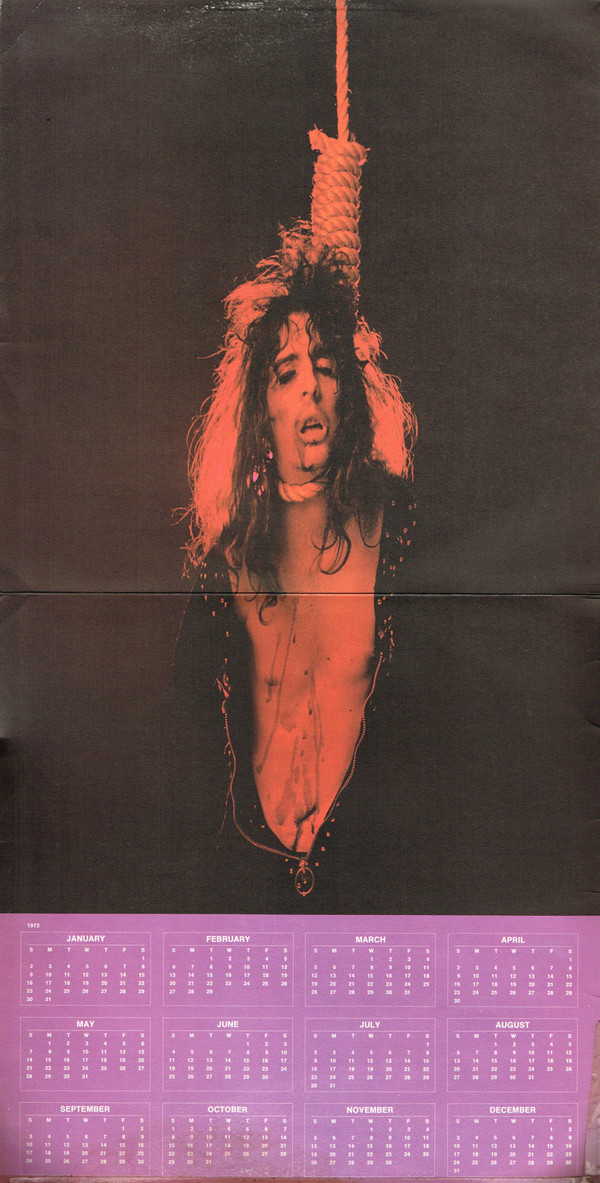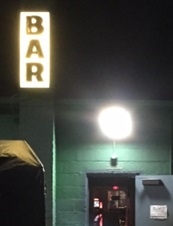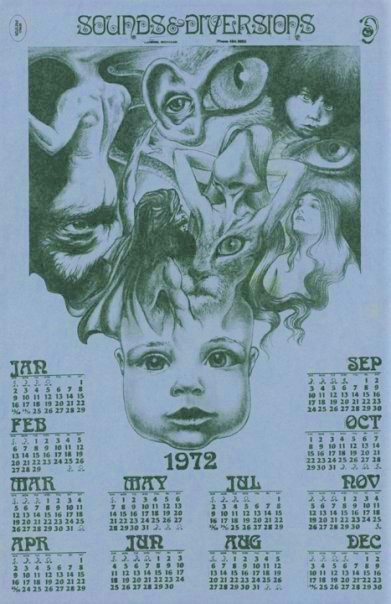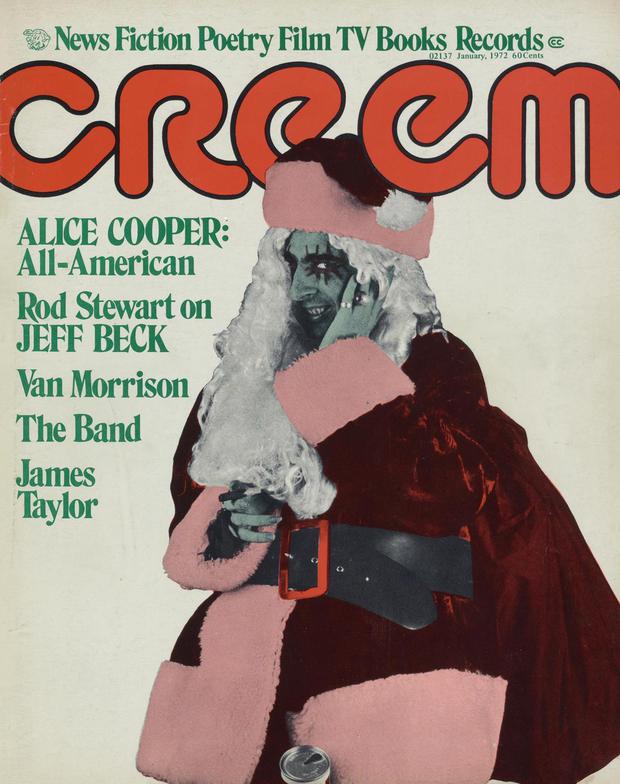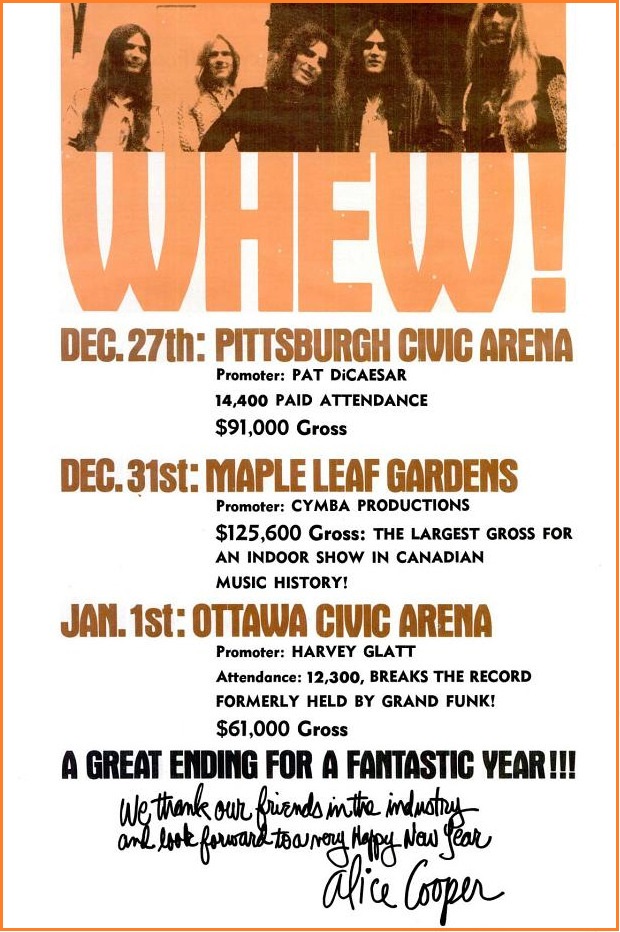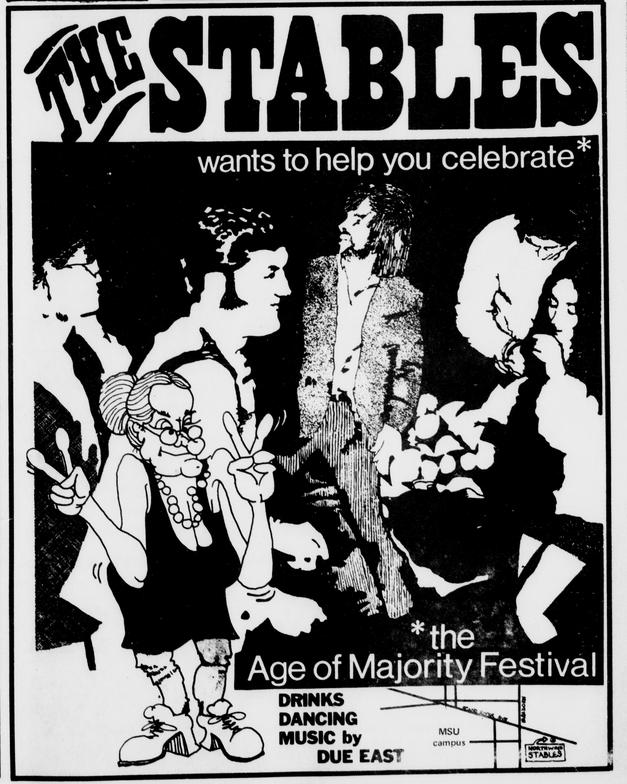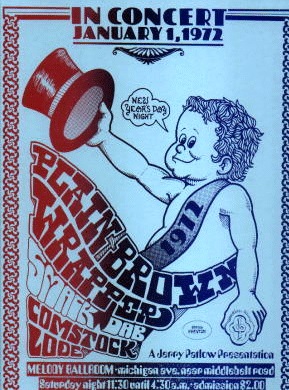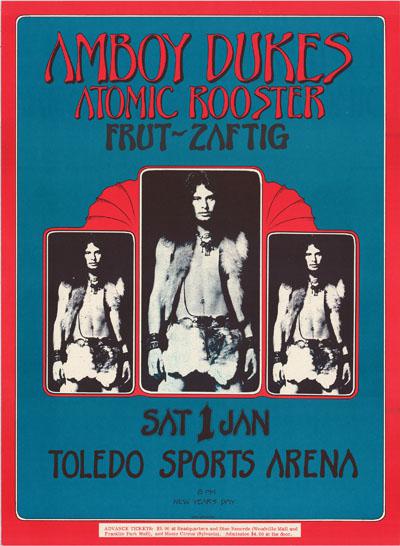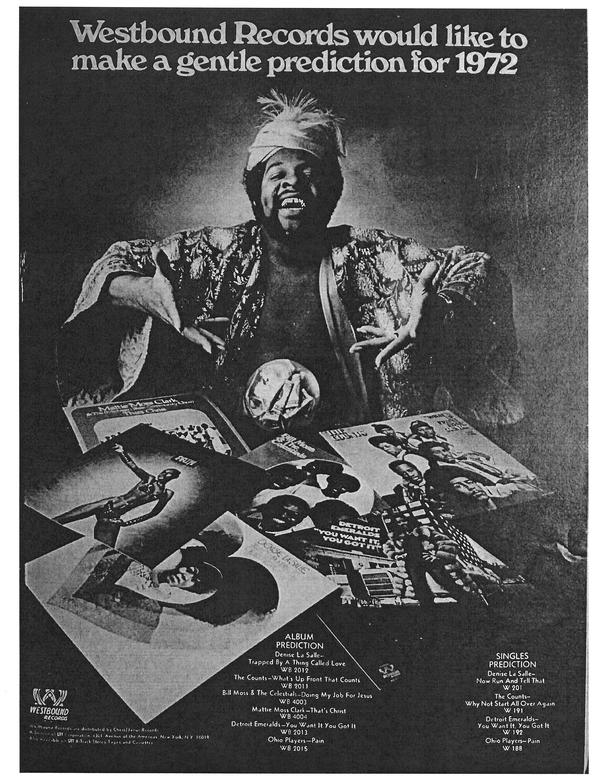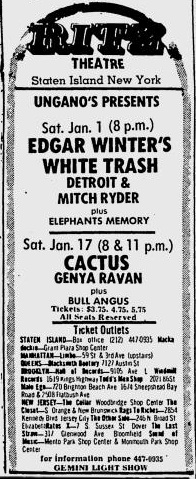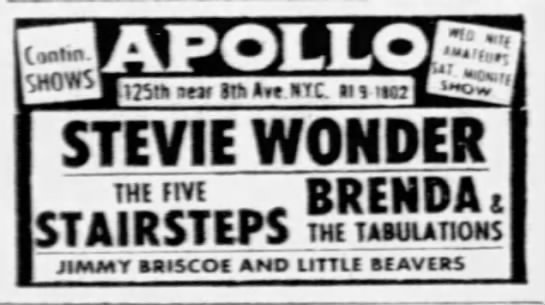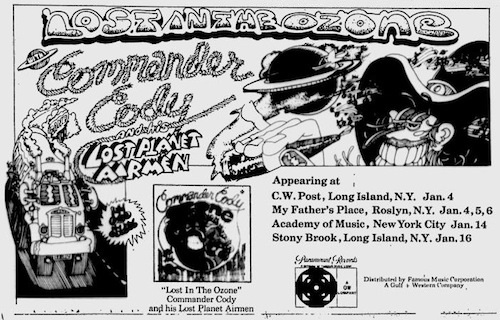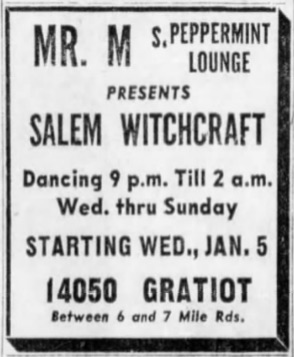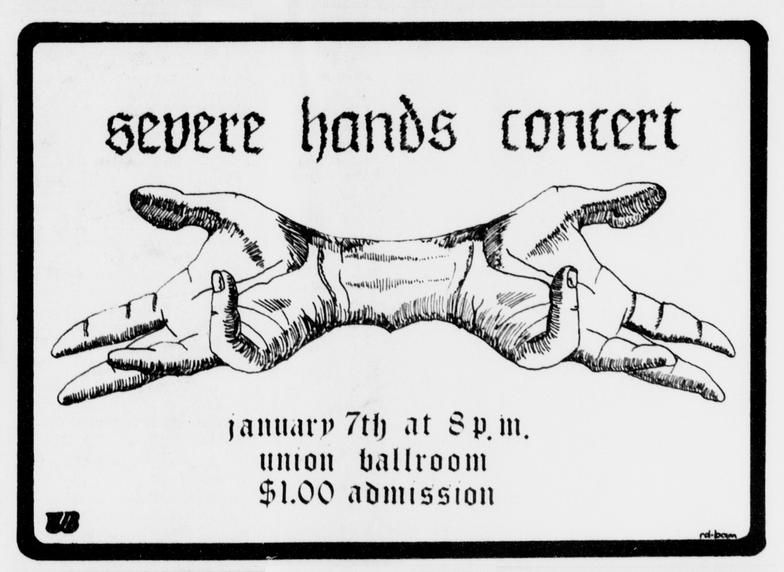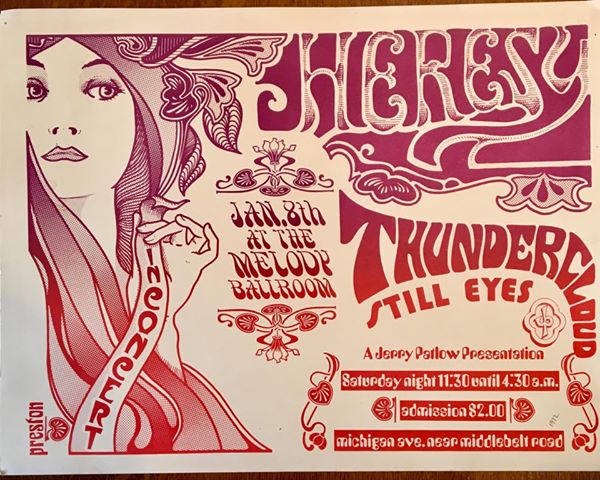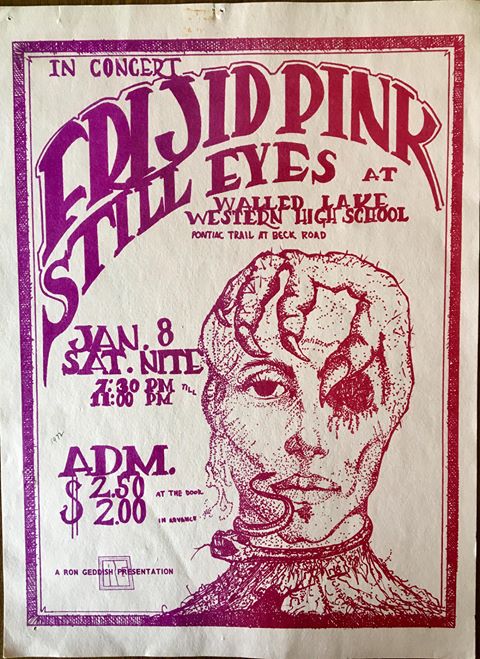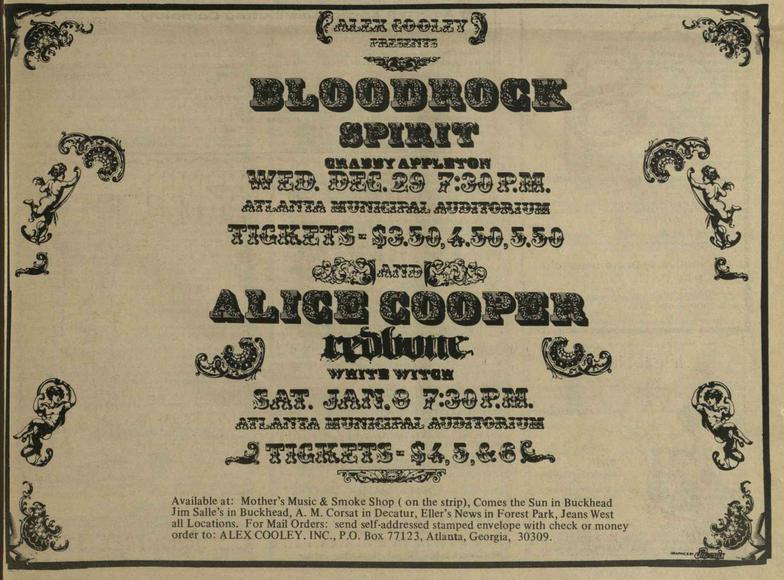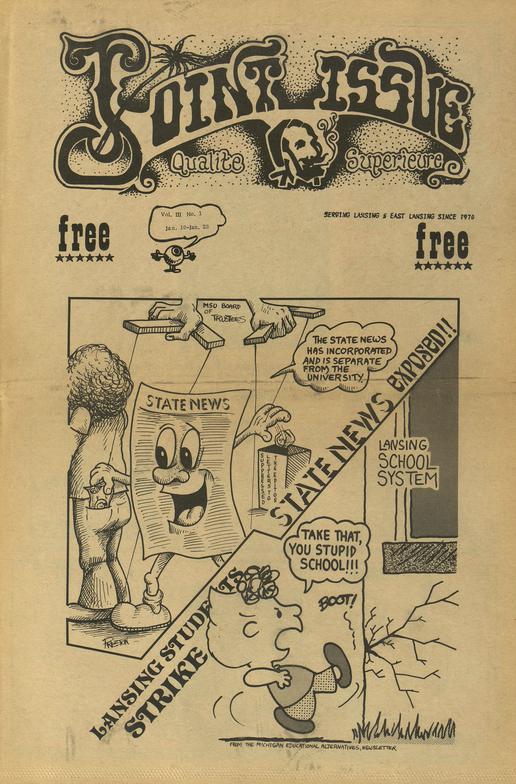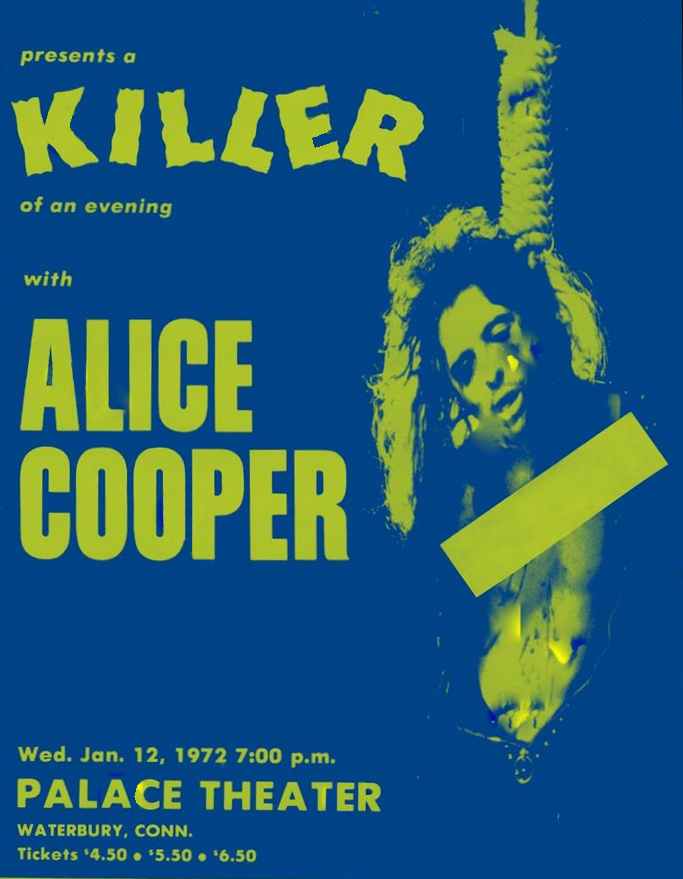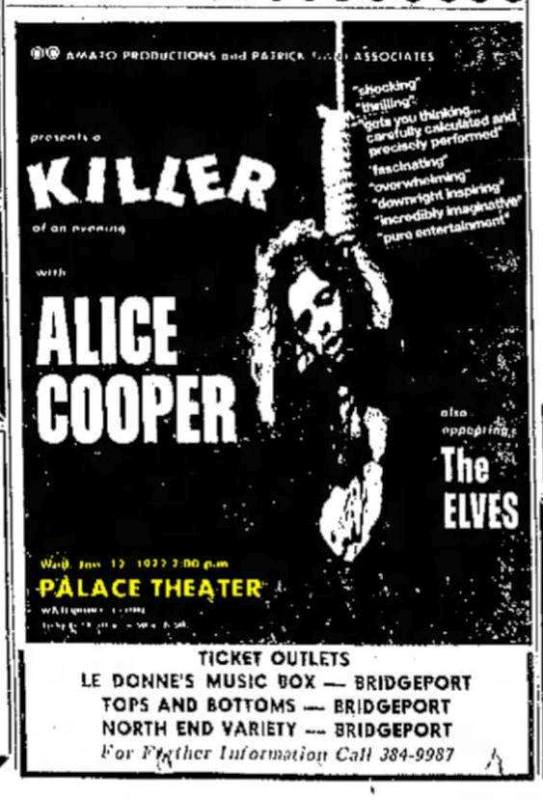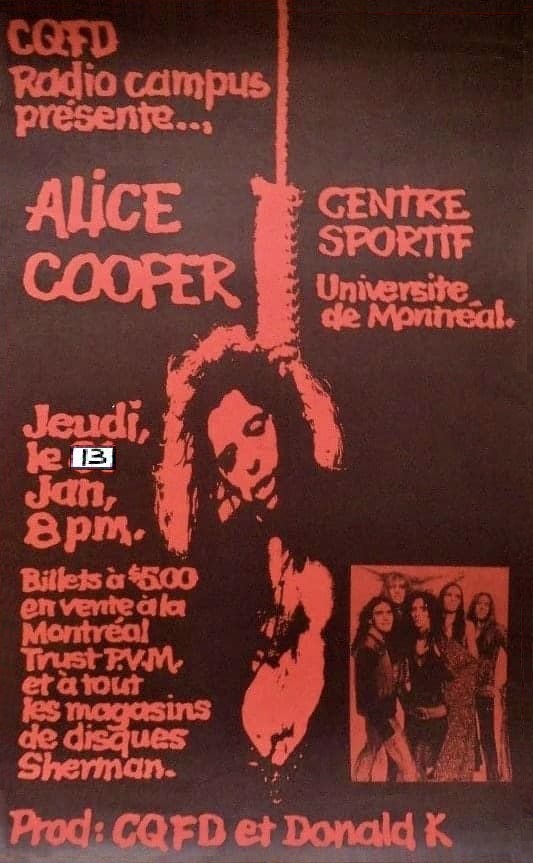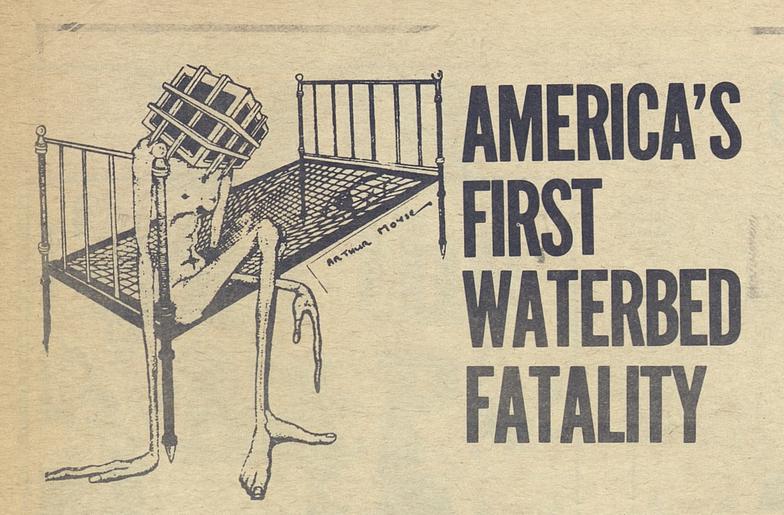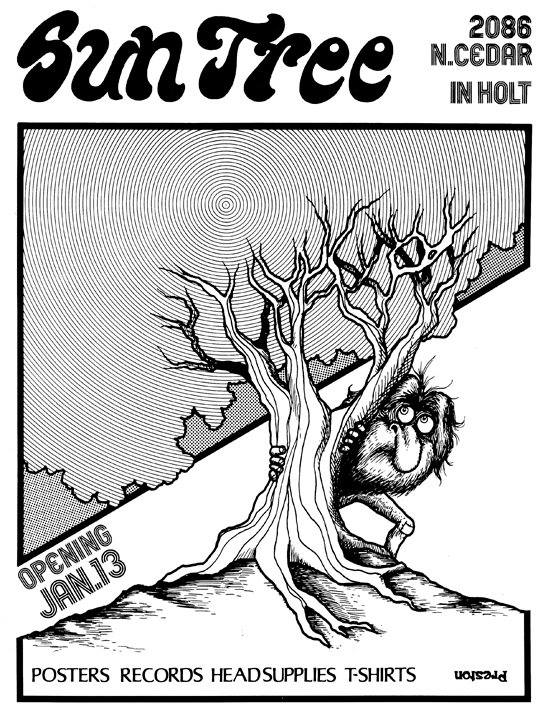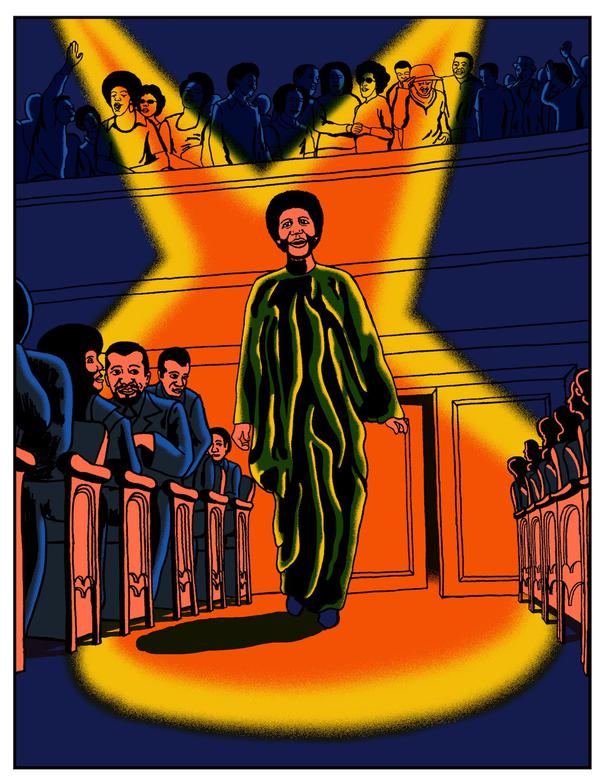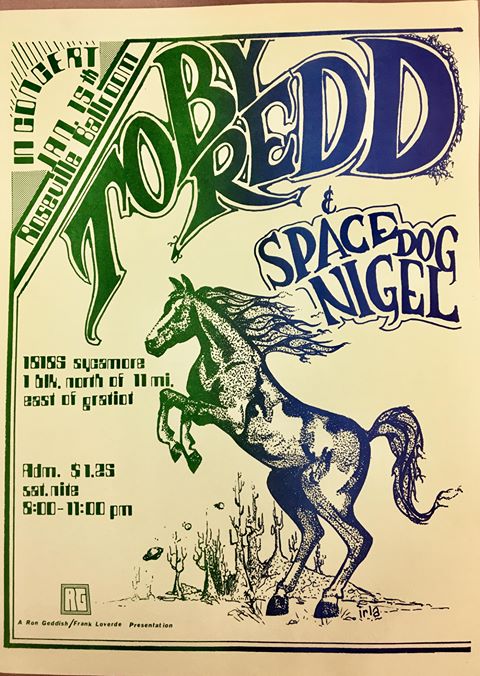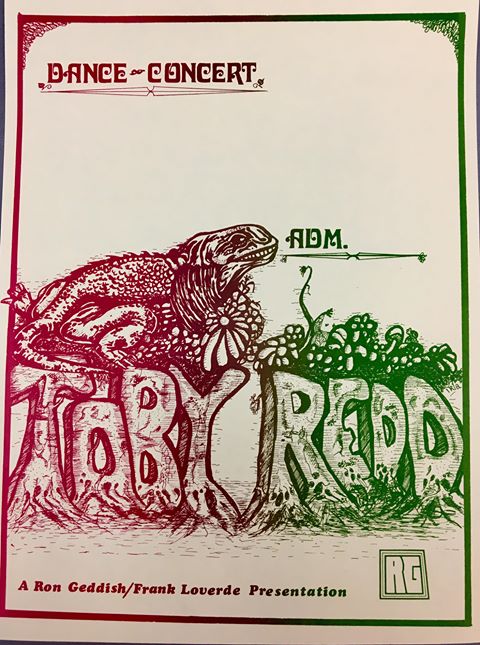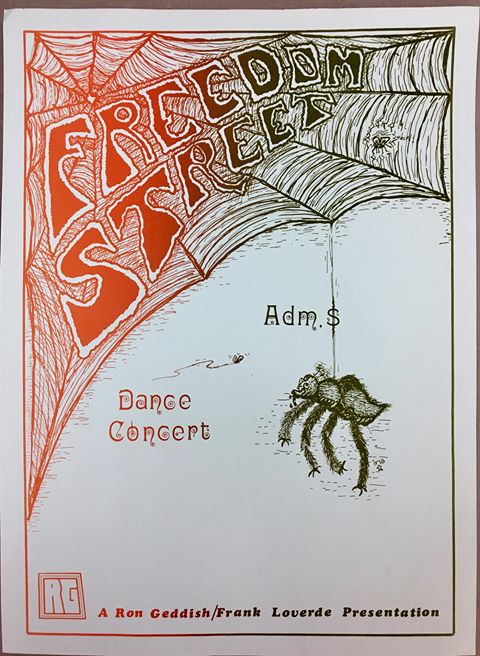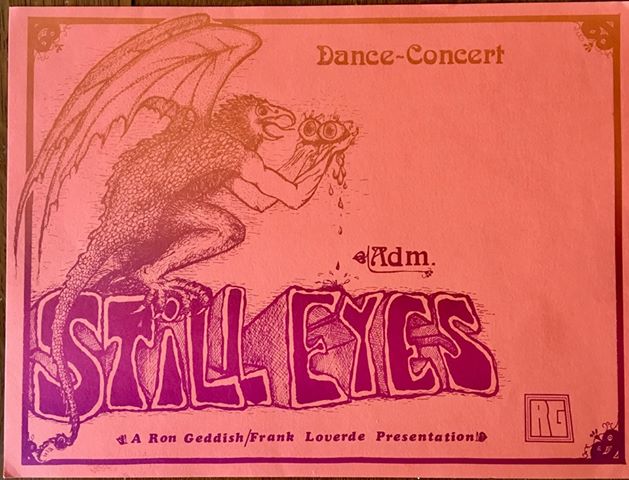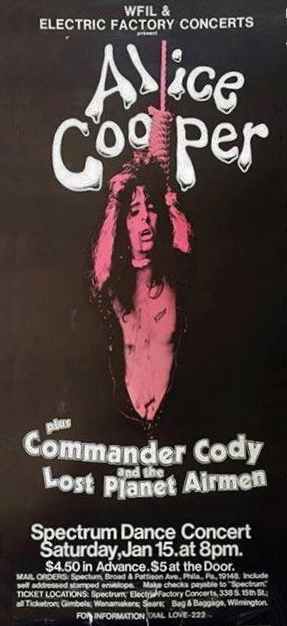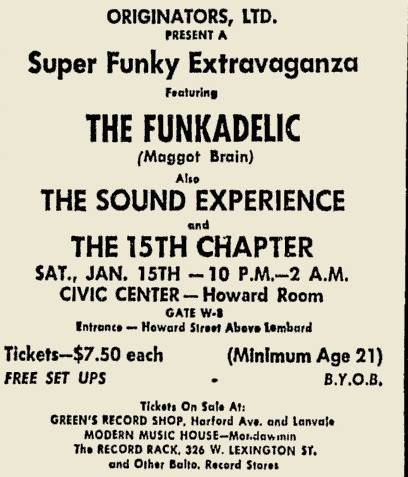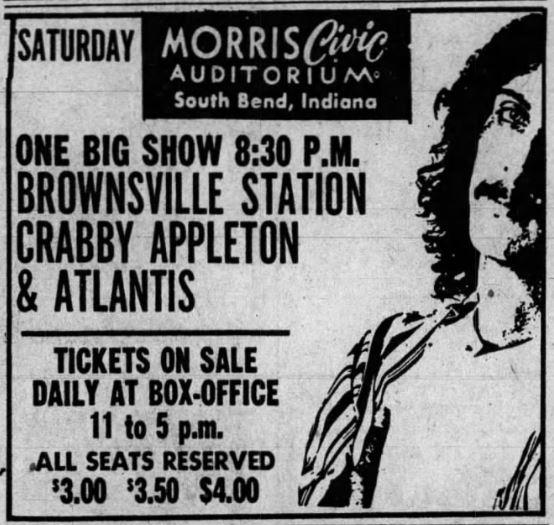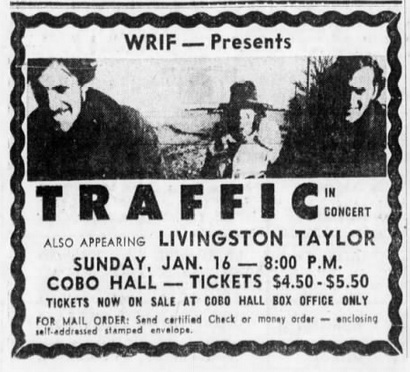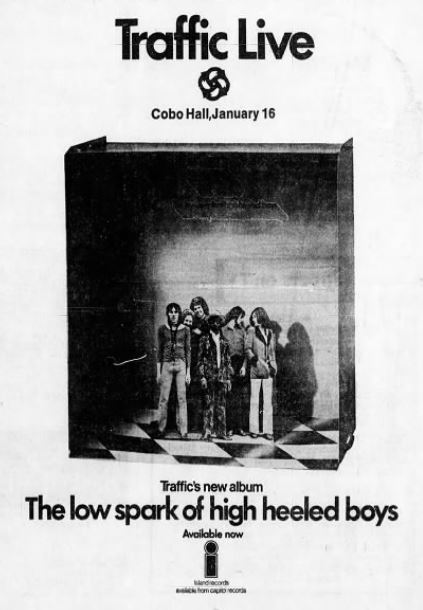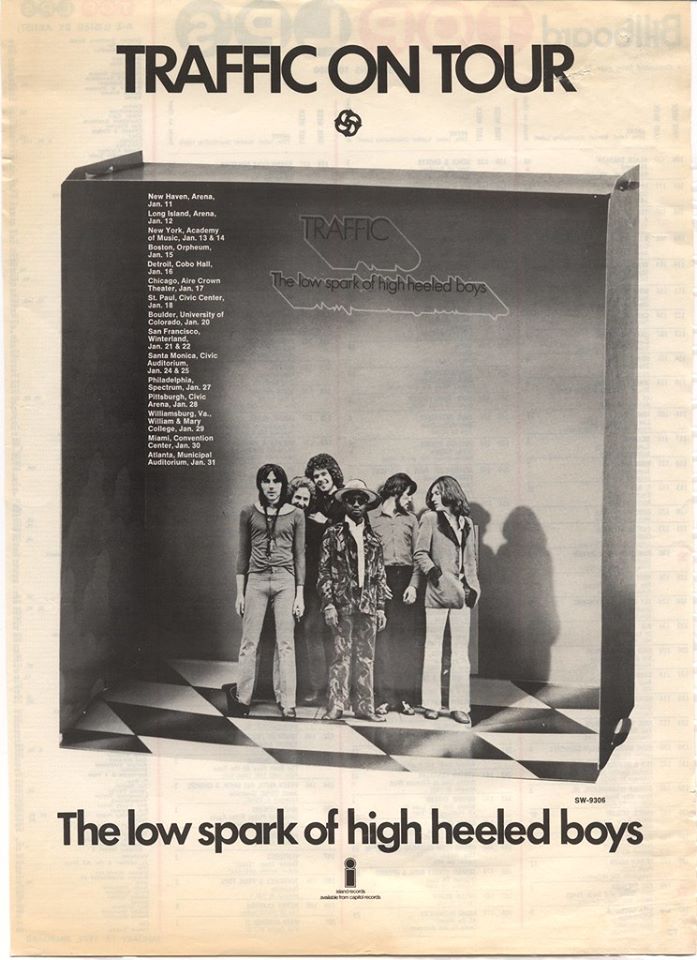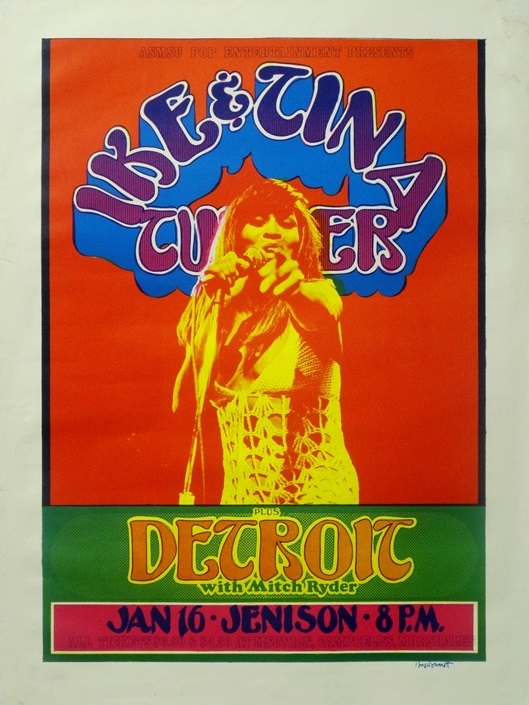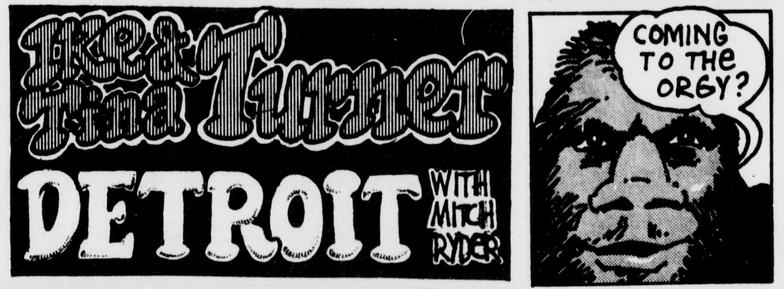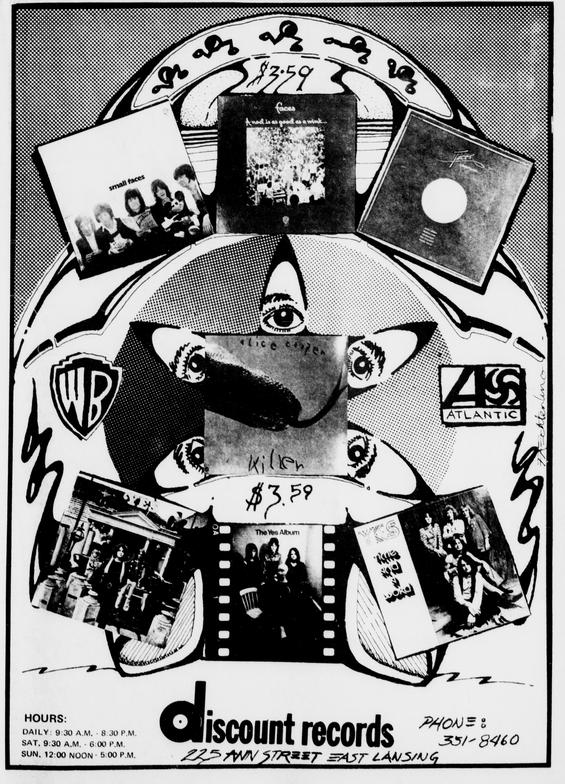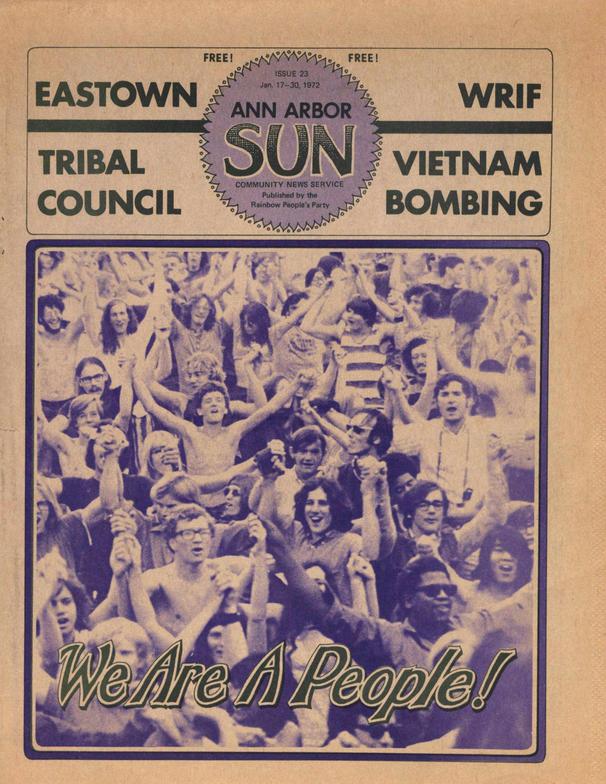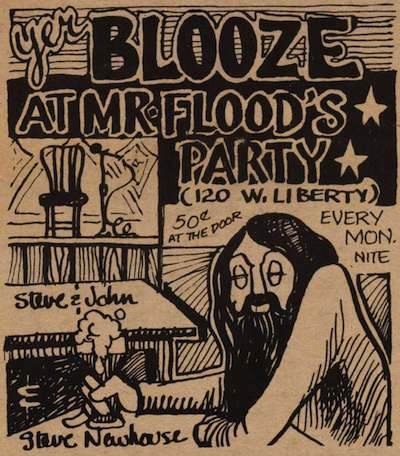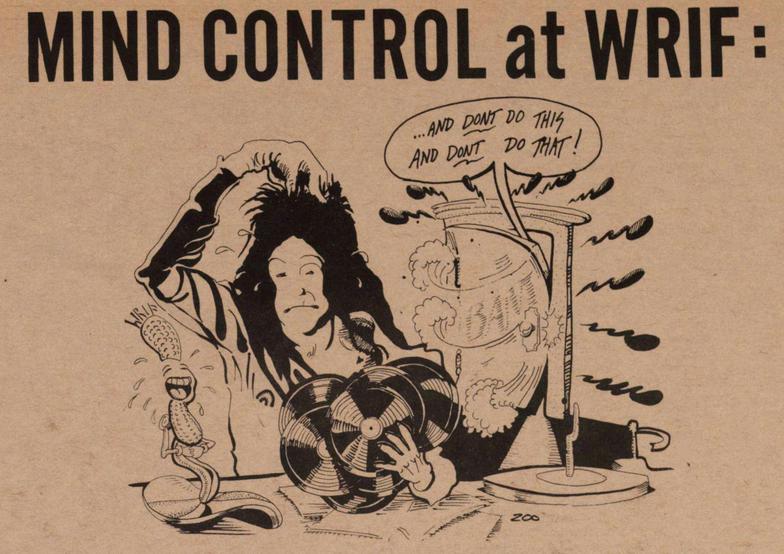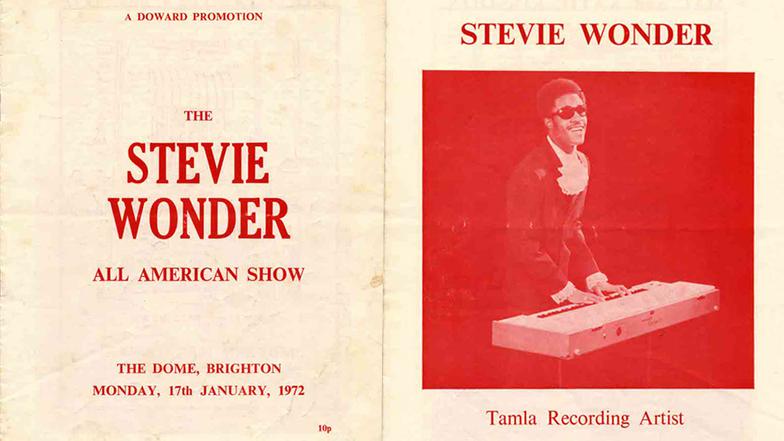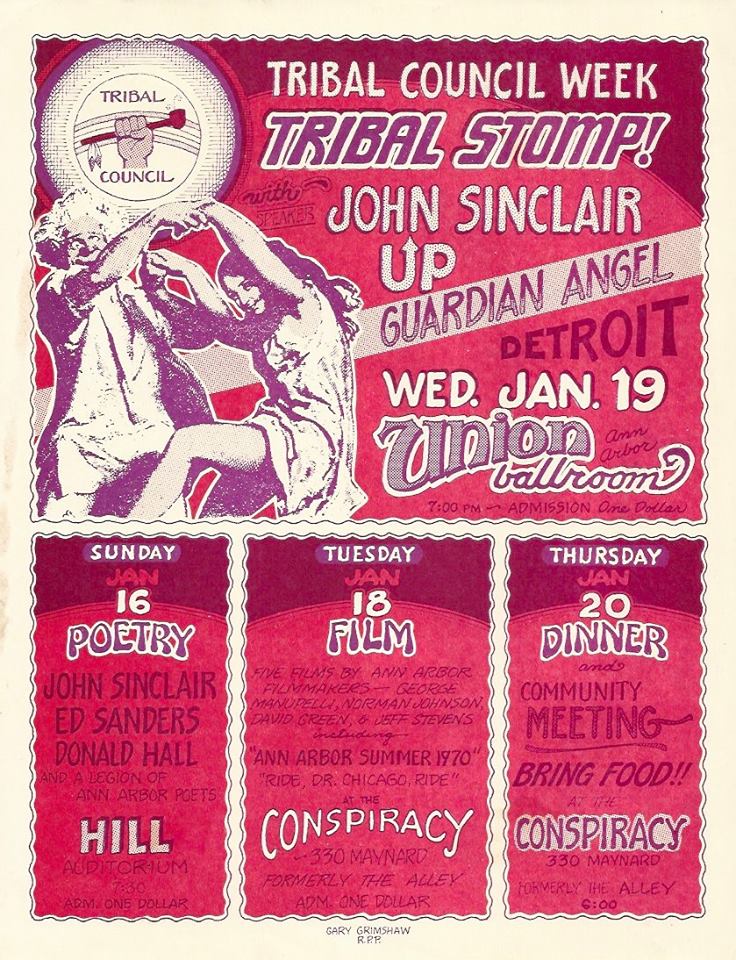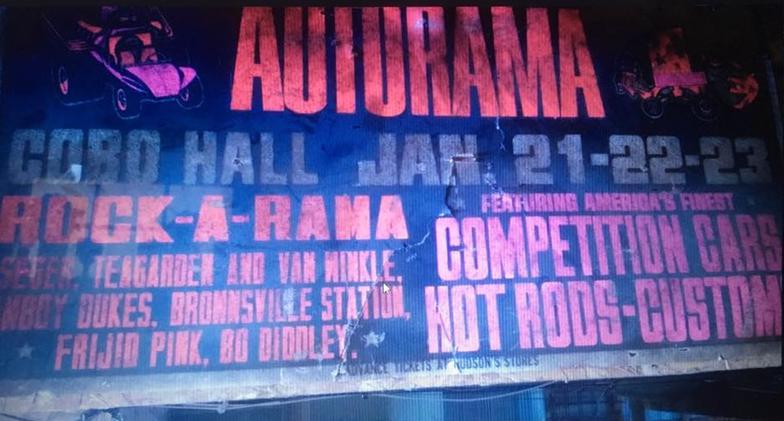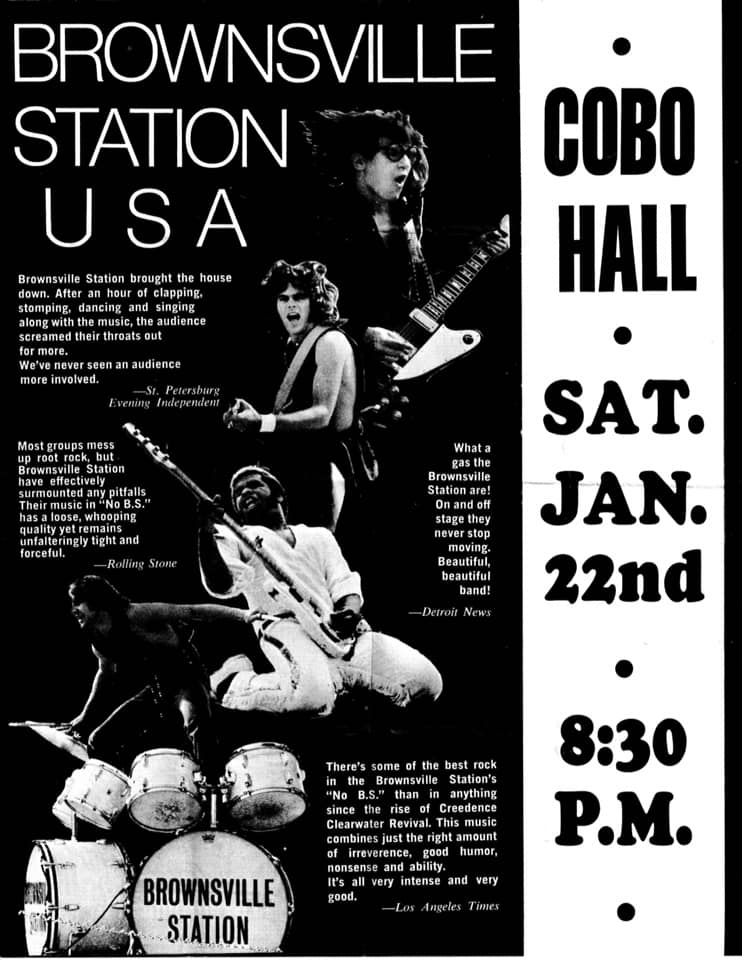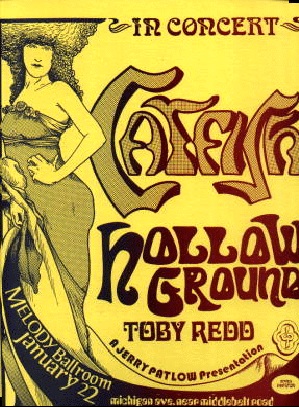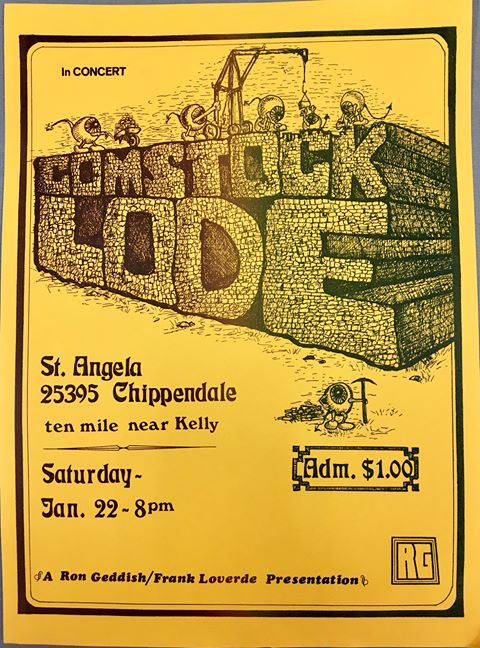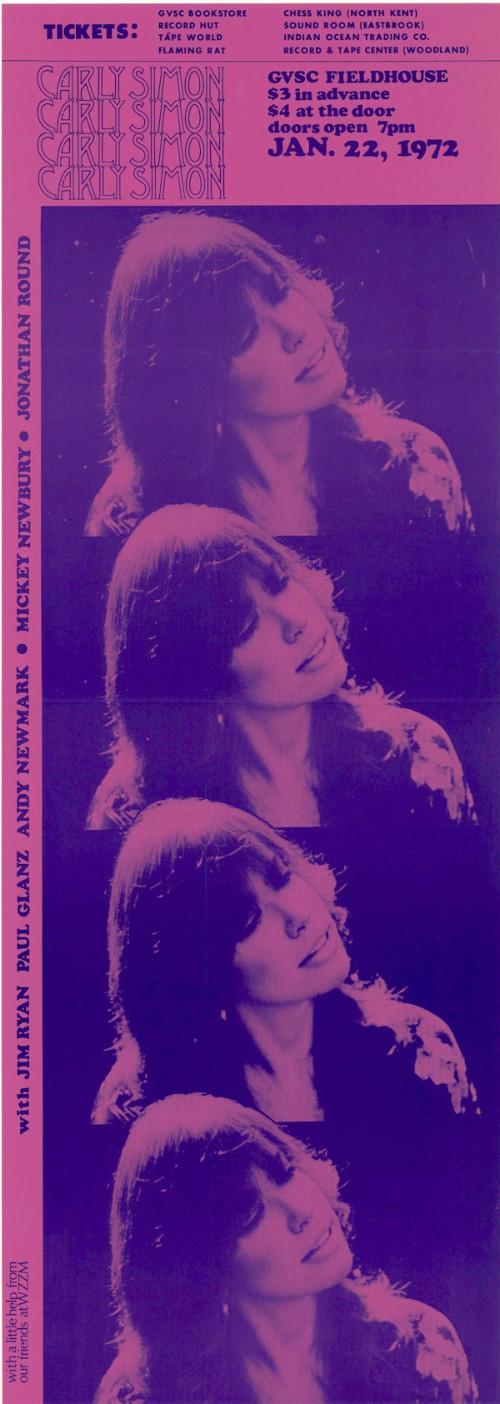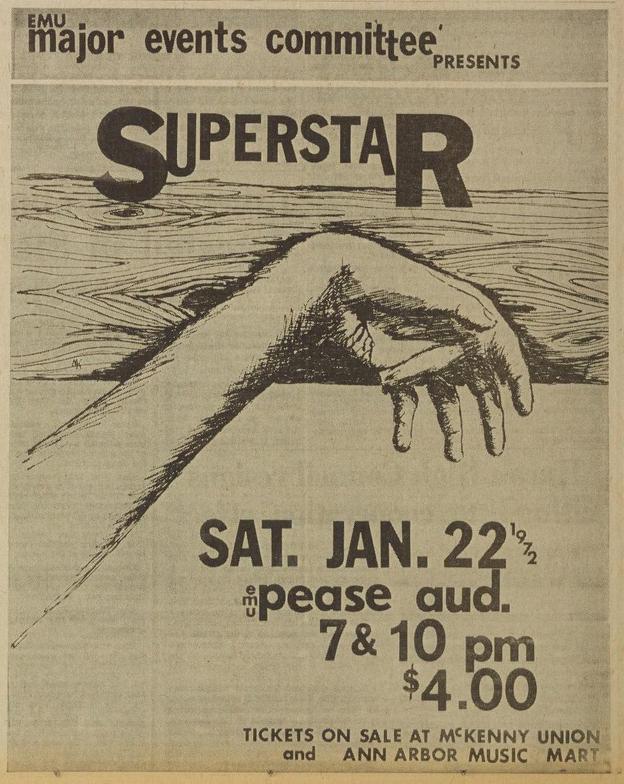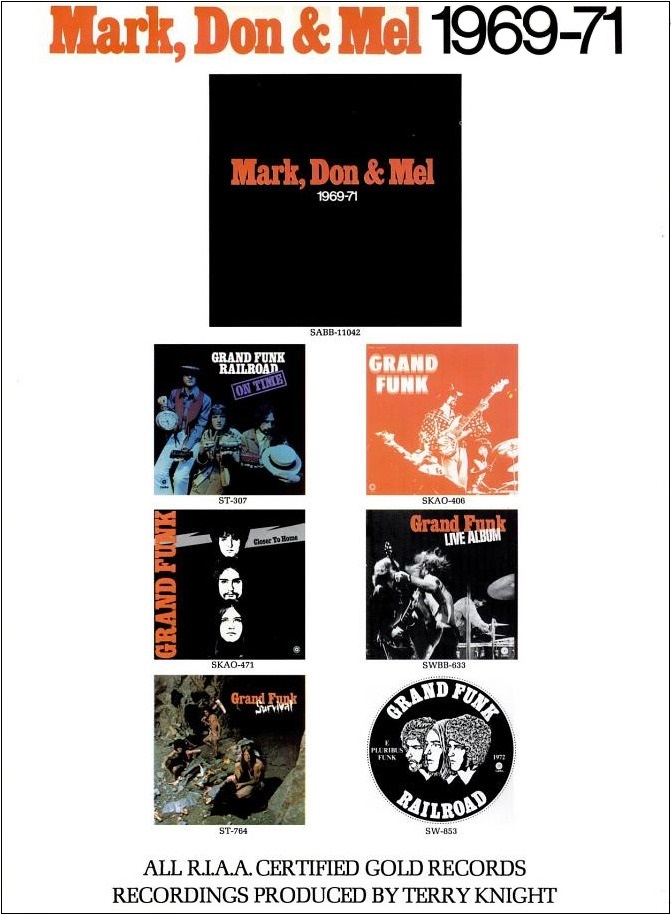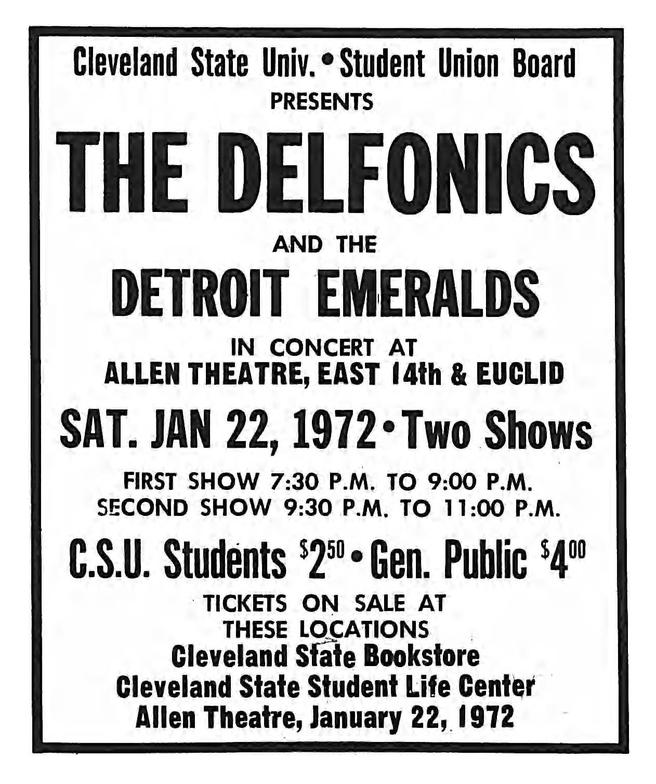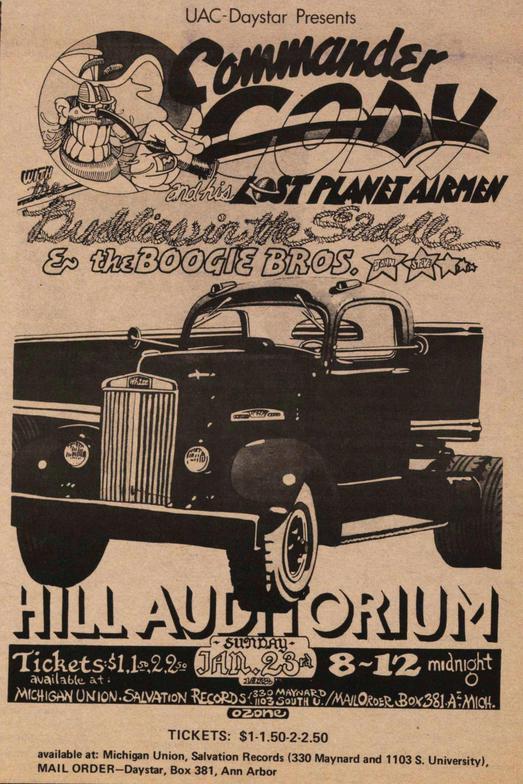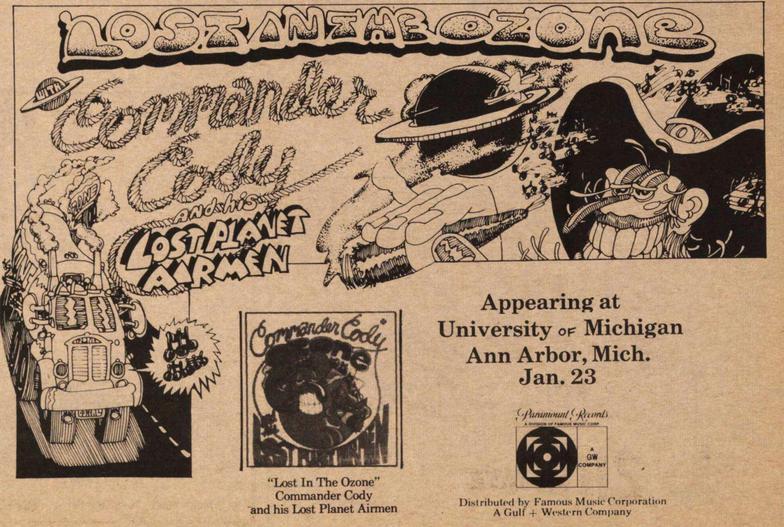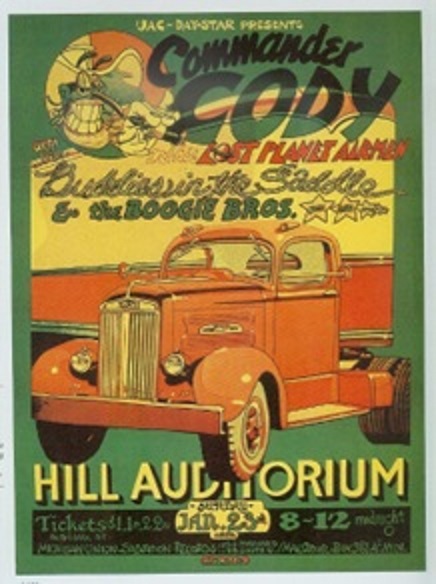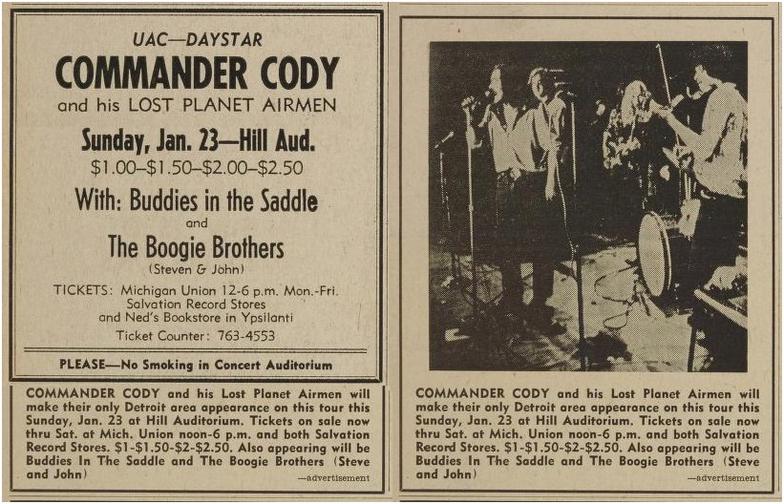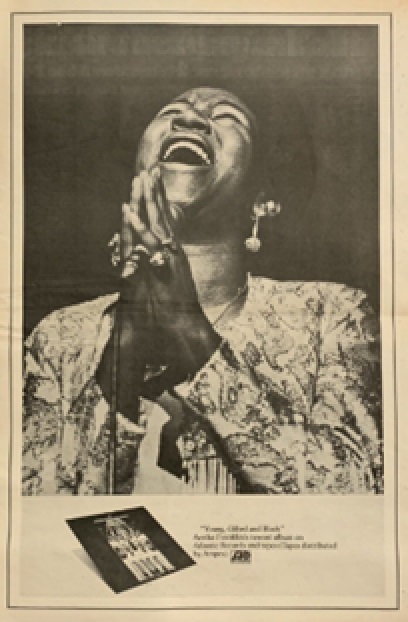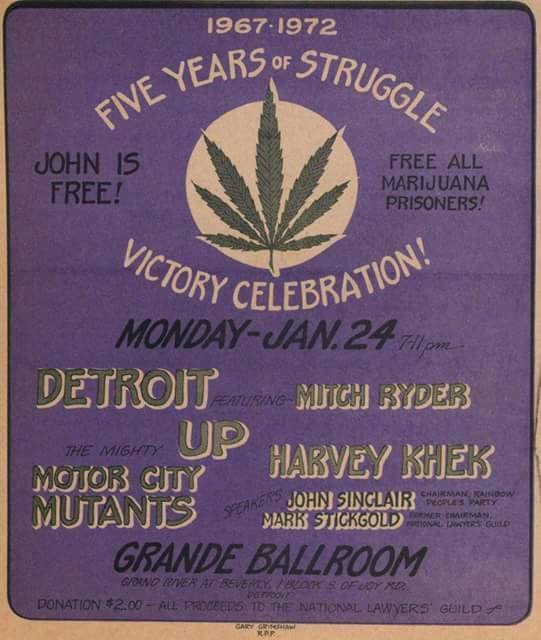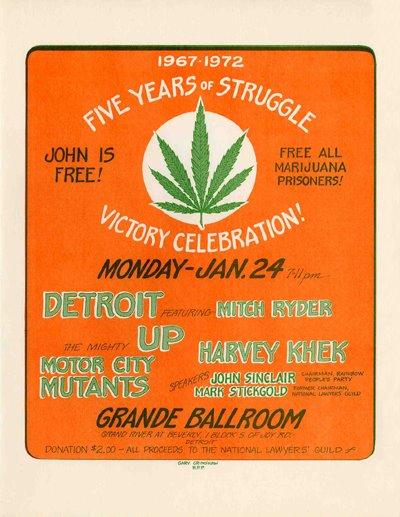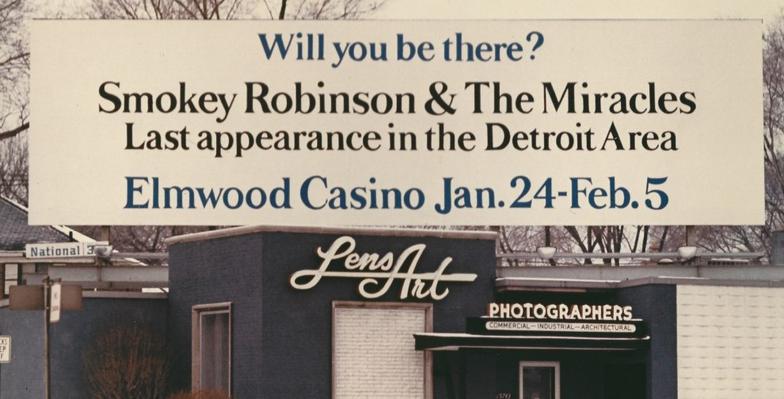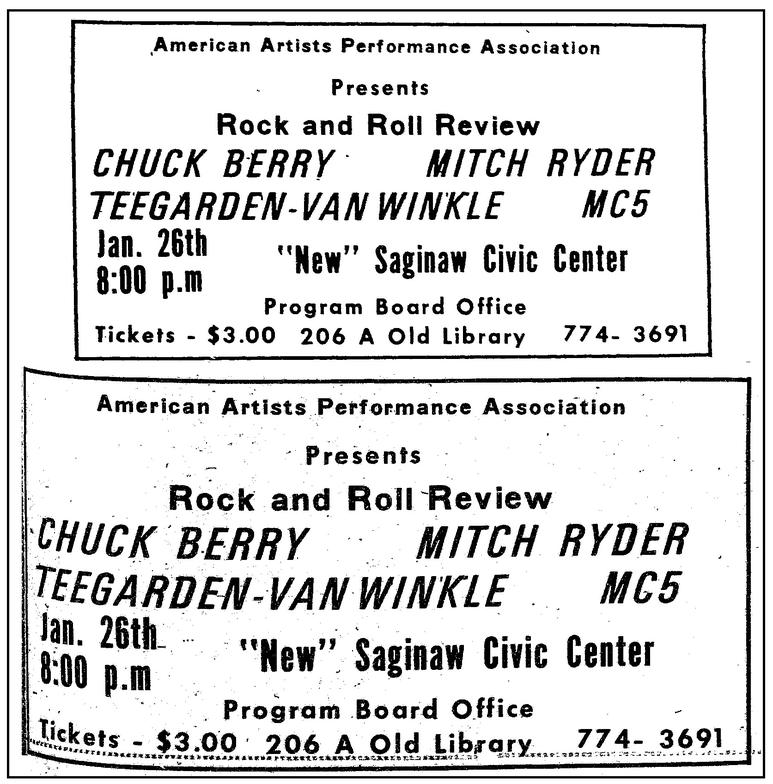Splatt Gallery
Double click here to add text.
Splatt Gallery's History of Michigan Concert Posters
Volume Eight - 1972
“I got the Alice Cooper album “Killer” for Christmas (thanks, mom & dad!) and went back to work after the break, proudly taking my new calendar with me and putting it up on the wall by my drafting table.”
***********************************************************
On New Year’s Eve 1971, at the stroke of midnight, when the ball-drop ended its descent, a new age commenced that significantly impacted the rock and roll scene in Michigan. On July 1, 1971, the Twenty-Sixth Amendment to the US Constitution had been ratified, granting the right to vote to all persons 18 years of age or older. It was left to the states to determine which other rights were to be given to this new age of majority, and Michigan was one of the first to include lowering the drinking age, from age 21 to age 18, to become effective on January 1, 1972.
In our research, we expected to find blazing headlines saying “Drink Up!”, with pictures of excited crowds of youth hoisting their mugs, but the coverage was rather low-key, the editors apparently not wanting to draw undue attention to the coming bacchanal. The newspapers in the university towns of Ann Arbor and East Lansing rather blandly reported that bar owners were seeing only “slight” upticks in the size of the crowds and predicting that things probably wouldn’t change that much. A month later, however, their cash registers ringing, and the booze flowing freely, the bar owners were happily reporting that business was booming and kids were cramming the drinking holes to capacity.
The impact on the live music scene seems inevitably obvious, ten years earlier teenagers may have been sneaking a nip in the parking lots before going into the teen clubs, now the teen clubs were obsolete, it was much easier for a sixteen year-old to pass for 18 than it would ever had been at 21, and the ranks of the “bar bands” swelled. One writer optimistically hoped that the bars would become like giant street parties, rather than pick-up joints with live bands serving only as loud jukeboxes. The latter proved to be more the case.
A 1972 calendar by Dennis Preston.
Cover for the January 1972 issue of CREEM magazine. Even though the band were no longer Michigan residents, the bond between Alice and Detroit will last forever.
A full-page poster/ad touting record-breaking attendances at three Alice Cooper shows, setting the largest gross for an indoor show in Canadian history at the Maple Leaf Gardens in Toronto on New Year’s Eve 1971, and breaking the attendance record set by Grand Funk in Ottawa, Canada on January 1, 1972.
Ad by an unknown artist for The Stables in East Lansing, Michigan, wasting no time in reaching out to the newly franchised 18 to 20 year drinkers, with this January 1, 1972 Age of Majority Festival, with music by Due East. The date and time are written on the old woman’s knee.
Dennis Preston poster for the Melody Ballroom in Inkster, Michigan, January 1, 1972. Bands were Plain Brown Wrapper, Smack Dab, and Comstock Lode.
Gary Grimshaw poster for the Toledo Sports Arena in Toledo, Ohio, January 1, 1972. Bands were Amboy Dukes, Atomic Rooster, Frut, and Zaftig.
A full-page Westbound Records ad in the January 1, 1972 issue of Billboard magazine, predicting some hit singles for the new year, let’s give them a listen:
Denise LaSalle – Now Run And Tell What (1971)
https://www.youtube.com/watch?v=90w1V7vOT0g
The Counts – Why Not Start All Over Again (1971)
https://www.youtube.com/watch?v=Vn6ep_YnDzE
Detroit Emeralds – You Want It, You Got It (1971)
https://www.youtube.com/watch?v=aq5Yh8znN1k
Ohio Players – Pain (1971)
https://www.youtube.com/watch?v=jTstTWSGnEs
Newspaper ad with Detroit with Mitch Ryder opening for Edgar Winter’s White Trash at the Ritz Theatre in Staten Island, New York on New Year’s Day, January 1, 1972. Cactus, listed for an upcoming show, no longer had any of the original members and this appearance was likely cancelled.
A newspaper ad for Stevie Wonder at the Apollo Theater in New York City, January 1-6, 1972.
An ad for Commander Cody & His Lost Planet Airmen with six shows in New York state, January 4-16, 1972. Artwork by Chris Frayne.
An ad for Salem Witchcraft at Mr. M’s Peppermint Lounge in Detroit, Michigan starting on January 5, 1972.
Nice interpretation of the band name on this poster by an unknown artist RD Bam(?) for the Severe Hands at the Union Ballroom in East Lansing, Michigan, January 7, 1972.
Dennis Preston poster for the band Heresy, with Thundercloud and Still Eyes, at the Melody Ballroom in Inkster, Michigan on January 8, 1972. Poster image sent to us by the drummer for Still Eyes, Patrick Irla. Note the showtime, 11:30pm until 4:30am.
Poster by Patrick Irla, drummer for the band Still Eyes, with his band opening for Frijid Pink at Walled Lake Western High School in Walled Lake, Michigan on January 8, 1972. This is the same date as the Melody Ballroom show that ran from 11:30pm to 4:30am, giving the band time to get there after this show. The posters made by Irla were for Ron Geddish Productions.
An ad for Alice Cooper with Redbone and White Witch in Atlanta, Georgia on January 8, 1972. Redbone replaced Dr. John, who was shown on earlier ads but had to cancel. The band Hydra may have actually replaced Redbone as well.
The January 10, 1972 issue of the Joint Issue in East Lansing, Michigan with cover art by Dennis Preston and Charles M. Schultz.
Poster for Alice Cooper at the Palace Theater in Waterbury, Connecticut, January 12, 1972 with equal opportunity censorship on bare nipples.
A second poster for Alice Cooper at the Palace Theater in Waterbury, Connecticut on January 12, 1972. Opening band the Elves, formed by Ronnie James Dio, had just shortened their name from the Electric Elves and were just about to shorten it again to Elf.
Poster for Alice Cooper in Montreal, Quebec, Canada on January 13, 1972. The poster is corrected for the right date (was transposed as “31”), the day of the week, Jeudi (Thursday) was correct.
The waterbed fad may have been starting to peak, a story in the January 13, 1972 issue of the Fifth Estate newspaper, titled “America’s First Waterbed Fatality” was obvious satire about a young man, a waterbed researcher at that, who had been electrocuted on his waterbed, a leak caused by his cat while he lay in bed with a portable TV with frayed wires. (His girlfriend had escaped death by leaving the bed to get a roach clip.)
A close look at the illustration that accompanied the story shows a signature, in recognizable lettering, “Arthur Mouse”. Chances are better than not that it’s Stanley, who right around this time, had quit his job at the waterbed store in Toronto and moved to back to San Francisco. While in Toronto, Mouse added to his almost Zelig/Forrest Gump-like adventures, ending up in a snapshot with John and Yoko during their bed-in.
Poster by Dennis Preston for the opening of the Sun Tree store in Holt, Michigan, ten miles south of Lansing, on January 13, 1972.
Poster by London based illustrator Gaurab Thakali for an exclusive screening of the movie “Amazing Grace” in August 2019, finally released more than forty-six years after its filming.
When we last saw the Rev. James Cleveland, he had recorded his break-through album with The Voices of Tabernacle in Detroit, Michigan in 1959, released on Mrs. Carmen Murphy’s House of Beauty record label. The success of that album led Cleveland to being signed by Savoy Records, who released close to 150 more albums by Cleveland up until his passing in 1991, earning Cleveland the title of “the King of Gospel Music”.
Rev. Cleveland moved to Los Angeles, California, to become Minister of Music at Grace Memorial Church of God in Christ where he attained even greater popularity working with various groups and musicians, including a young keyboardist named Billy Preston.
He eventually founded his own choir, the Southern California Community Choir, and also founded his own ministry and church, Cornerstone Institutional Baptist Church in Los Angeles, which grew from ten to thousands of members throughout the remainder of his life.
On January 13-14, 1972, Cleveland organized two concerts featuring Aretha Franklin at the New Temple Missionary Baptist Church in Watts, California along with his Southern California Community Choir. The concerts were recorded and released as the double-album “Amazing Grace” in June 1972. The album was a smash success, selling over two million copies in the United States alone and earning a double platinum certification. It also won Franklin the 1973 Grammy Award for Best Soul Gospel Performance, and as of 2017, it was the biggest selling record of Franklin's entire fifty-plus year recording career as well as the highest-selling live gospel music album of all time.
The concerts were also filmed and were scheduled to be released in 1972 along with the film “Super Fly”, but a technical error in the synchronization of the audio and the video made the film unusable and it was shelved. In 2007, producer Alan Elliott purchased the raw footage, and four years later, it was scheduled for a 2011 release, but it was blocked by Franklin for various reasons.
After Franklin's death in 2018, her family made an arrangement to release the film, it premiered in November 2018, and was released worldwide in April 2019. An expanded version of the film is being developed with Neon and is scheduled to have a theatrical release in March 2020.
Going back to the record album, we wanted to at least find Side Two, with the three songs, “How I Got Over”, “What a Friend We Have in Jesus”, and “Amazing Grace”, based on an AllMusic review which regarded Amazing Grace as possibly Franklin's "greatest release ever in any style" and said, "Her voice was chilling, making it seem as if God and the angels were conducting a service alongside Franklin, Rev. James Cleveland, the Southern California Community Choir, and everyone else in attendance. Her versions of 'How I Got Over' and 'You've Got a Friend' are legendary."
The best we could do instead, is to find the complete album here:
Aretha Franklin – Amazing Grace (album) (1972)
https://www.youtube.com/playlist?list=PLmXxqSJJq-yV1RlaoFulbUPqnomCSvVXD
Poster by Patrick Irla for Toby Redd with Space Dog Nigel at the Roseville Ballroom in Roseville, Michigan on January 15, 1972.
Poster by Patrick Irla, a “show-blank” for the band Toby Redd, circa 1972.
Poster by Patrick Irla, a “show-blank” for the band Freedom Street, circa 1972.
Poster by artist and drummer for Still Eyes, Patrick Irla, a “show-blank” for his own band, circa 1972.
Poster for Alice Cooper with Commander Cody & His Lost Planet Airmen at the Spectrum in Philadelphia, Pennsylvania on January 15, 1972.
An ad for Funkadelic in Baltimore, Maryland on January 15, 1972.
Newspaper ad for Brownsville Station in South Bend, Indiana on January 15, 1972.
Newspaper ad for Traffic with Livingston Taylor at Cobo Hall in Detroit, Michigan, January 16, 1972.
Poster/flyer for Traffic with Livingston Taylor at Cobo Hall in Detroit on January 16, 1972, and an Island Records ad from Billboard magazine with tour dates for Traffic showing Detroit, Cob Hall as the sixth show of the tour.
It was the ninth Michigan show for the British band, going back to the Grande Ballroom for two shows in April 1968. All of the other shows had been at the Eastown Theater in Detroit, except for one show in Ypsilanti in 1970.
Traffic – The Low Spark of High Heeled Boys (live 1972)
https://www.youtube.com/watch?v=R8M8R835Ck4
Poster by Hugh Surratt for Ike & Tina Turner and Detroit with Mitch Ryder at the Jenison Fieldhouse in East Lansing, Michigan, January 16, 1972.
A pair of small ads by Doug Huston, for Ike & Tina Turner and Detroit with Mitch Ryder at the Jenison Fieldhouse in East Lansing, Michigan, January 16, 1972, and for a midnight movie festival.
Discount Records ad by Terry Echterling, not yet signing his work as Jive Comix, in the January 16, 1972 issue of the State News in East Lansing, Michigan.
Cover of the January 17, 1972 edition of the Ann Arbor SUN newspaper in Ann Arbor, Michigan. Photo by Leni Sinclair, or David Fenton, with lettering by Gary Grimshaw.
Illustration by an unknown artist for Mr. Flood’s Party bar in Ann Arbor, Michigan, January 17, 1972. These were well done, and we’ll gather up a few more. Quite likely the work of John Copely before he formed the Crow Quill design team with Zack Mallory in 1973.
A story in the January 17, 1972 issue of the Ann Arbor SUN newspaper revealed how the DJ’s at WRIF radio had been given a memo with strict play rules that further limited the DJ’s broadcasts. It mentioned that the DJ’s were not happy about and many would be leaving the station, Hank Malone had already departed. In lamenting the decline of WRIF, the SUN gave them the compliment of once being the best station in Detroit, rocking even harder than rival WABX.
Program cover for Stevie Wonder in Brighton, England, January 17, 1972.
Gary Grimshaw poster for the “Tribal Council Week”, highlighted by a concert at the Union Ballroom in Ann Arbor, Michigan, January 19, 1972, with UP, Guardian Angel, and Detroit.
Large poster outside Cobo Hall, in Detroit, Michigan for the 20th Annual Autorama show, January 21-23, 1972, with a band line-up, called the “third annual rockarama” in the Detroit Free Press, of Bob Seger, Teegarden & Van Winkle, Amboy Dukes, Brownsville Station, Frijid Pink, and Bo Diddley.
Poster for Brownsville Station at Cobo Hall in Detroit, Michigan on January 22, 1972, where they appeared as part of the entertainment at the 20th Annual Autorama show along with Bob Seger, Teegarden & Van Winkle, Amboy Dukes, Frijid Pink and Bo Diddley.
Dennis Preston poster for the Melody Ballroom in Inkster, Michigan, January 22, 1972. Bands were Catfish, Hollow Ground and Toby Redd.
Poster by Patrick Irla for the band Comstock Lode in Roseville, Michigan on January 22, 1972.
Poster by an unknown artist for a show by Carley Simon at Grand Valley University near Grand Rapids, Michigan, January 22, 1972, with Jonathon Round opening.
Poster/ad by an unknown artist for a production of “Superstar” at Eastern Michigan University in Ypsilanti on January 22, 1972.
A full-page Capitol Records ad in the January 22, 1972 issue of Billboard magazine for the compilation album “Mark, Don & Mel 1969-71” by Grand Funk Railroad.
An ad with the Detroit Emeralds opening for the Delfonics in Cleveland, Ohio on January 22, 1972.
Poster by Chris Frayne (Ozone) for Commander Cody at Hill Auditorium in Ann Arbor, Michigan, January 23, 1972.
Record company ad for Commander Cody at Hill Auditorium in Ann Arbor, Michigan, January 23, 1972, with artwork by Chris Frayne (Ozone).
Newspaper ads for Commander Cody & his Lost Planet Airmen at Hill Auditorium in Ann Arbor, Michigan on January 23, 1972, with Buddies in the Saddle and the Boogie Brothers.
A full-page Atlantic Records ad for the eighteenth studio album by Aretha Franklin, “Young, Gifted and Black”, released on January 24, 1972. Six singles were released off the album, the most successful was “Day Dreaming” which was #1 on the Billboard R&B Singles chart and peaked at #5 on the Billboard Hot 100. The song was nominated for a Grammy award and although it did not win, Franklin did win a Grammy for Best R&B Vocal Performance for the album “Young, Gifted and Black”.
Aretha Franklin – Day Dreaming (1972)
https://www.youtube.com/watch?v=8GFDUWzWP9A
On this date two years prior, there had been coordinated Free John Now! Rallies from Vancouver to Seattle, Chicago, New York, and of course in Detroit at both the Grande Ballroom and the Eastown Theater. This year, January 24, 1972 was a Victory Celebration with John Sinclair now just six weeks out of prison. It was held again at the Grande Ballroom with Detroit featuring Mitch Ryder, UP, Harvey Khek, and The Mighty Motor City Mutants, with poster by Gary Grimshaw.
Alternative color version of Gary Grimshaw’s Victory Celebration poster.
This looks photo-shopped, but we believe it is an authentic photograph of one of Tom Schlesinger billboards from his time as Motown’s Director of Advertising and Creative Concepts, for shows by Smokey Robinson & the Miracles from January 24, 1972 through February 5th, at the Elwood Casino in Windsor, Ontario, Canada.
A pair of ads, which if this Rock and Roll Review show in Saginaw, Michigan actually took place on January 26, 1972, would be a newly-found show for the MC5, also with Chuck Berry, Mitch Ryder and Teegarden & Van Winkle.
Volume Eight - 1972 - continues - HERE


